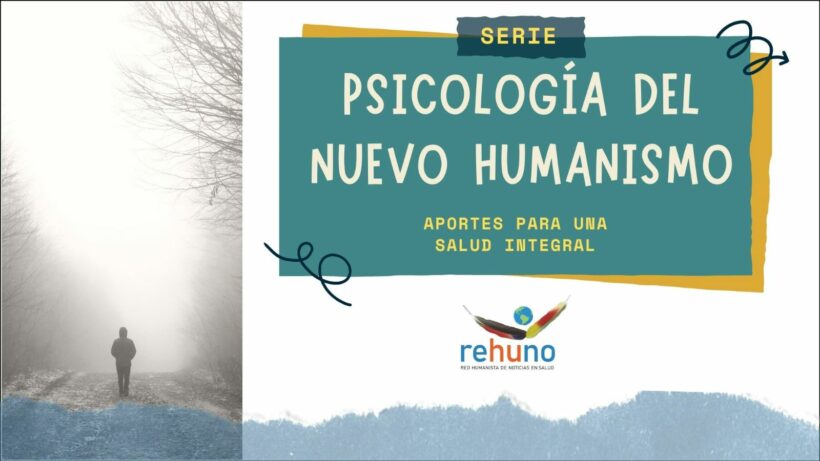From the Humanist Health News Network REHUNO Health we set up a place of exchange where we find a new look on daily life based on an experiential and existential psychology (the Psychology of New Humanism), and which gives some concrete proposals of personal work to reach a full sense of our existence and a life free of unnecessary suffering.
It is not, therefore, a therapeutic psychology, nor does it deal with any pathology, but is aimed at anyone who wants to understand themselves and have the tools, if they so wish, to initiate a positive change in their lives. Psychological wellbeing is undoubtedly one of the foundations of integral health, which is why it is an aspect that needs to be addressed. We invite you to put these proposals into practice and also to contact us and tell us about your experience. Write to us!
By Jordi Jiménez
In other articles we have talked about our energetic circuit, which is specialised in giving different responses to the external and internal world according to the needs of each moment, and also in the article on dreams we talked about the importance of emotional climates.
We said that the response centres are actually working in structure, interrelated to each other, so that when one is misaligned, it affects the others. From an energetic point of view, they are misalignments in the circulation of energy between the centres. One of the most frequent is emotional imbalance. We are talking about energetic disturbances not only in a negative sense, but also in a positive sense. For example, an event with a strong emotional content may have occurred (a loss, a failure, a disappointment, etc.) that blocks or hinders the normal circulation of the psychophysical energy in the emotional centre. But there may also have been an event of immense joy that overwhelms us and that also causes an imbalance in the energetic circulation, but this time in a positive way. In both cases we enter into what we call “a climate”, an emotional climate.
It is called a climate precisely because of the metaphorical similarities it has with atmospheric weather: something diffuse, broad, that affects everything or that can change from one day to the next. Emotional climates are something like that. They are ill-defined, difficult to grasp or to explain clearly, they affect our whole energetic structure, leaving us with no desire for anything, with a sense of no future and all that sort of thing (in the case of negative weather) or with a rush of immense joy that opens up the future (in the case of positive weather). Yes, many are thinking: “well, the former is called depression and the latter is called euphoria, isn’t it? OK, a geographical depression is an area of lower altitude than its surroundings, and registers of energetic downturn are clear in the former case, so the depression metaphor is fine. But “depression” is also a clinical diagnosis of some seriousness, just as euphoria is another clinical diagnosis with well-defined symptoms, and we have already warned that our psychology does not enter into pathologies or therapeutics associated with such pathologies. We describe sensations and registers from experience, from the experience (of phenomena) and with them we try to understand what is happening in order to move forward in a coherent and unitive life.

So, we experience emotional climates and this alters the functioning of other response centres. For example, if I am in a heavy or dark climate, I notice that I don’t feel like moving and I don’t think clearly. In effect, the motor and intellectual centres have been left with less energy because the emotional centre is subtracting that energy from the circuit. This shows the structural functioning of the whole energy circuit, the interaction between the centres, as we saw in one of the first articles of this series. If, on the other hand, I am in a positive climate of immense joy, on the contrary, I feel like moving, jumping, shouting, and I also perceive that I am more lucid and awake. The energy circuit has been affected globally by this emotional state, which in this case works positively, contributing energy to the rest of the centres.
What can we do when a negative climate invades us?
The question is what can we do when a negative climate invades us, sucks our energy, blocks us. As we said, energy circulates from the bottom upwards, therefore, a blockage in the emotional centre can only be managed from the lower centres, in this case, from the motor centre, which is the one immediately below the emotional one. So, one of the best things we can do is to move. People have intuitively recognised this. When someone is unwell,l they say: you have to go out, you have to move, you have to do things, don’t stay at home and so on. Indeed, even if it is on an intuitive level, it has been recognised that in cases of negative weather one of the best things to do is to move, simply to do things, that is to mobilise the motor centre so that the energy rises and the normal energetic circulation is restored. Obviously in cases of strong and heavy weather it is not enough to go for a walk in the afternoon, but in the case of minor weather the fact of moving always helps, facilitates or in any case improves a little the emotional situation of the person.
Of course, when you are in a “climate” you don’t feel like doing anything. As we have already said, the adjacent centres are without energy. But you have to move, even if you don’t feel like it, to re-establish the energetic circulation and thus change your emotional state. Start with something gentle and short, such as a short, pleasant walk, for example, and do it periodically as if it were a syrup to be taken every 8 hours, even if it tastes like hell.
In a previous article we talked about body tensions, especially associated with the striated musculature (that of voluntary movements), we saw the advantages of relaxing these tensions and some practices for doing so. So we could study tensions and climates, as two of the main components of self-knowledge, to m,ake a first analysis of the current situation and see some practices to modify those tensions and climates. For this we invite you to read the following chapter of the book “Self-Liberation” by Luis Ammann which you will find here: https://es.humanipedia.org






